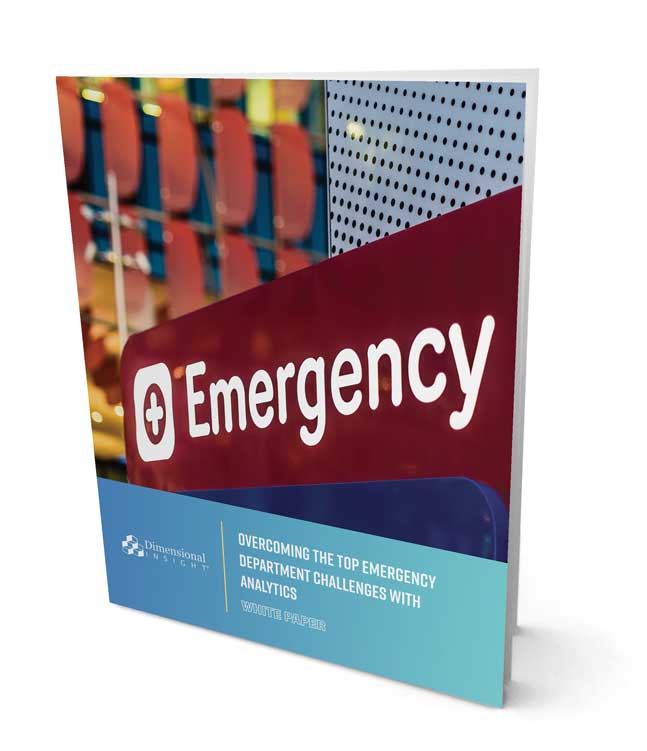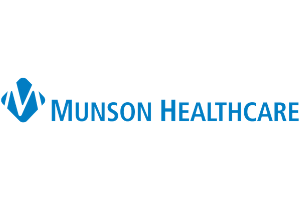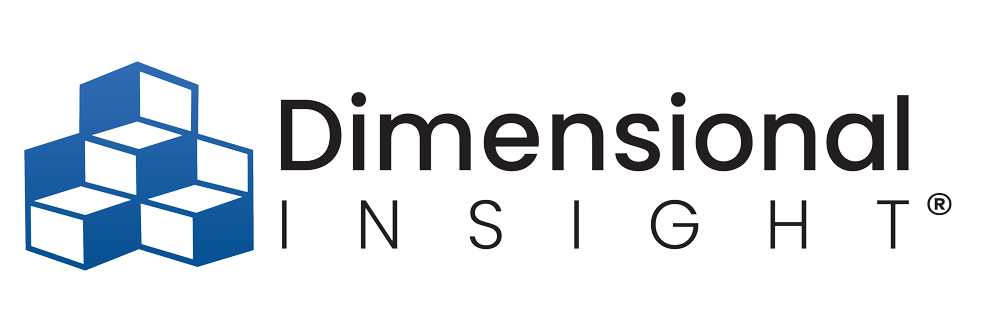
Overcoming the Top Emergency Department Challenges with Analytics

Overcoming the Top Emergency Department Challenges with Analytics
Introduction
Hospitals are complex organizations that require each department to work seamlessly together to provide the best possible care for patients. However, if any department falls short of its optimal performance, it can negatively impact the entire organization. The emergency department, in particular, faces a set of distinct challenges that can hamper the overall flow of the hospital.
In this white paper, we will examine five key challenges facing emergency departments:
Capacity constraints
Financial pressure
Mental health and substance abuse populations
Performance of ancillary services
We will explore the root causes of these challenges and the impact they have on patients, staff, and the hospital as a whole.
In addition to highlighting these challenges, we will discuss how analytics can be used to effectively address them. By leveraging data-driven insights, hospitals can optimize their resources and improve patient care, even in the face of significant challenges.

Staffing Shortages
The COVID-19 pandemic resulted in critical workforce shortages for the healthcare industry, as hospital staff left the profession due to burnout and trauma. Even as the COVID-19 pandemic has improved, hospitals are still facing staffing shortages, as healthcare staff are hesitant to stay in or return to the profession. Data shows that healthcare workers are still fleeing the industry, with a recent study indicating that 31% of surveyed nurses reported plans to leave their role in patient care. The American Hospital Association reports that there will be a shortage of up to 3.2 million healthcare workers by 2026. These trends are particularly alarming, as staffing shortages can lead to:
Lower quality of care
Increased risk of medical errors
Longer wait times
This is problematic, especially in the emergency department where timely patient care can be the difference between life and death. Furthermore, the emergency department can be one of the busiest areas of the hospital, experiencing spikes in patient volume which can strain staff resources.
Hospitals can thrive only when they ensure their staff members are well-equipped to provide top-notch patient care. One of the critical elements of achieving this is by avoiding overworking staff and maintaining a balanced schedule that prevents the emergency department from being understaffed or overstaffed at various times throughout the day. This approach helps maintain optimal patient care and avoids the risk of staff burnout or compromised performance due to excessive workload or inadequate staffing.
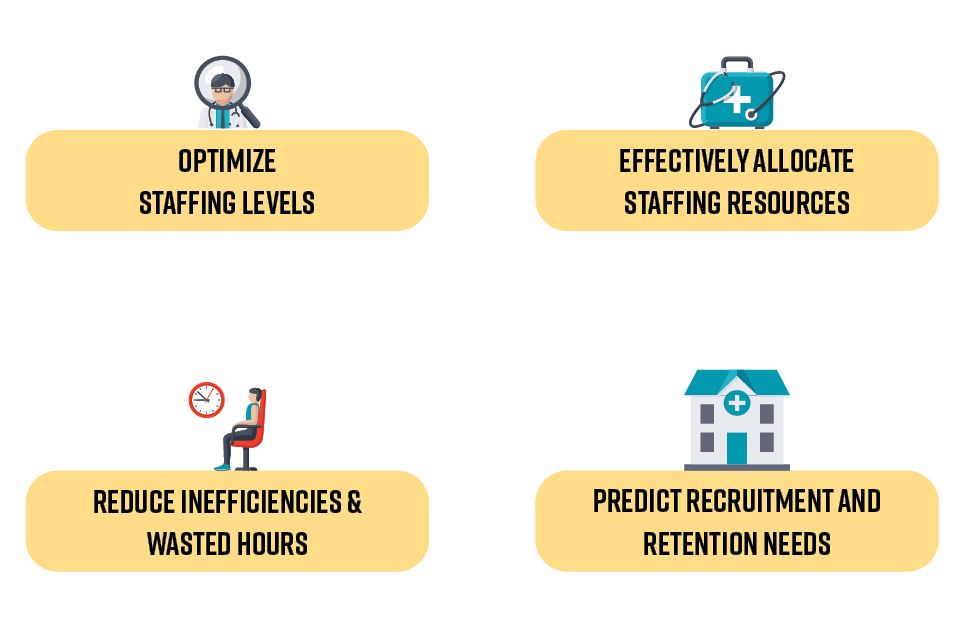
How analytics can help
Analytics solutions can effectively pinpoint peak times for each hospital department, enabling hospital management to optimize staffing levels during the busiest times of the day. This includes ensuring that there is an adequate number of doctors and lab technologists available to maintain smooth operations and prevent backup. Furthermore, by analyzing data on staff performance and productivity, emergency departments can identify areas where staff may be struggling or may need additional training and support.
By collecting and analyzing data on staff turnover rates, compensation levels, and job satisfaction, emergency departments can identify strategies for recruiting and retaining staff to ensure staffing levels are optimized. Conversely, hospitals can leverage the same data to identify instances of wasted work hours resulting from an excess of staff in certain departments when there are no patients to be treated. By making informed staffing decisions based on reliable data, hospitals can effectively streamline operations, reduce waste, and provide optimal patient care.

Capacity Constraints
The impact of overcrowding in the emergency department cannot be overstated. When the number of patients exceeds the department’s capacity to provide adequate care, everyone suffers. The CDC reports that emergency departments in the United States handle approximately 131 million patients annually, highlighting the scale of the challenge hospitals face in managing capacity.
When EDs are overcrowded it can result in adverse effects and poor patient outcomes—one study even found that overcrowding increased the risk of patient death by 34%. Due to overcrowding, patients may not receive the care they need, and the department may not be able to operate at its full potential. The consequences of overcrowding can be dire, with delays in treatment and even a risk to patient safety.
The COVID-19 pandemic and a growing, aging population have contributed to soaring patient volumes in emergency departments, particularly in areas with limited healthcare resources or options for primary care. Consequently, many patients seek treatment in the emergency department, making it crucial for hospitals to explore innovative solutions that can optimize their resources and improve patient care. It is essential for hospitals to address these challenges in order to provide the best possible care for patients.
How analytics can help
An analytics solution that merges information from the emergency department with other hospital departments allows for a real-time understanding of what is happening throughout the facility. Up-to-the-minute analytics information can enable staff to make informed decisions about patient flow and bed management, ensuring that resources are used as efficiently as possible.
Analytics can help identify bottlenecks and inefficiencies in emergency department operations. By analyzing patient flow, hospitals can identify areas where improvements can be made to reduce wait times and improve the patient experience. This not only benefits patients but also allows hospitals to optimize operations to meet capacity demands.
Some analytics tools also offer mapping that can help hospitals decide if they are maximizing their physical space. These tools can identify usage patterns and enable hospitals to identify where additional space could be created or where underutilized areas could be repurposed. This could allow for an expansion of a particular department and possibly increase capacity to meet an increasing demand.

Populations Experiencing Mental Health and Substance Abuse
Patients with mental health and substance abuse disorders often face significant challenges when seeking medical care. Unfortunately, the emergency department has become an increasingly common first point of contact for these patients. National Health Statistics data shows that 1 in 5 adults in the US live with a mental health disorder, but more than half do not have access to regular treatment. This lack of care can exacerbate their condition, leading to emergency department visits as a result. The consequences of untreated mental health issues can be severe, resulting in longer ED visits and more hospital admissions.
Research published in the Journal of General Internal Medicine indicates that emergency department visits made by adults with alcohol and substance use disorders increased by 30 percent between 2014 to 2018. Shockingly, one out of every 11 ED visits and one out of nine hospitalizations each year involve an individual with an alcohol problem or other substance use disorder.
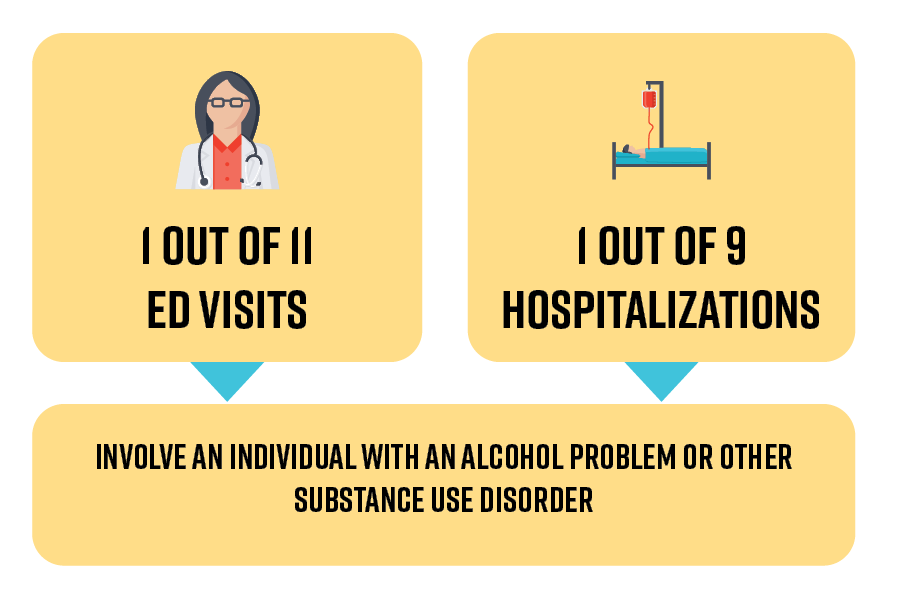
This rise in patients visiting the ED and experiencing mental health or substance abuse issues is a major challenge. Due to the high volume of patients experiencing mental health or substance use issues visiting the ED, this can result in capacity issues and overcrowding. EDs need to ensure that they have appropriately trained staff available to triage and treat patients experiencing these issues. Additionally, patients with substance use or mental health disorders are likely to experience comorbidities, such as homelessness or trauma which makes their care more complex.

How analytics can help
One approach to addressing these challenges is using analytics. By analyzing patient data, EDs can identify patterns and trends in patient visits and adjust their resources accordingly. This can help to ensure that they have enough staff with the necessary expertise to care for patients with mental health and substance abuse issues.
Analytics can also identify opportunities for early intervention and prevention. By analyzing data on comorbidities and social determinants of health, EDs can develop targeted interventions to address the root causes of mental health and substance abuse disorders. This proactive approach can help to reduce the burden on emergency departments while also improving patient outcomes.
Another critical advantage of using analytics is the ability to create a unified data repository that facilitates communication and coordination of care among specialty healthcare providers and other hospital departments. By sharing information in real-time, EDs can provide a more coordinated approach to patient care, which can lead to better outcomes for patients with mental health and substance abuse issues.

Financial Pressures
When operations are running smoothly, an emergency department should serve as a positive financial resource for a hospital. However, with increased patient volume and limited resources, emergency departments sometimes struggle to stay profitable. With the cost of staffing, overhead, and supplies rising, emergency departments face mounting pressure to maintain and increase revenue. Additionally, insurance reimbursement rates for emergency care have been decreasing in recent years, which can make it difficult for emergency departments to cover their costs.
If operations aren’t running smoothly, this can seriously impact the bottom line for EDs. For example, revenue can be lost from missed opportunities for treatment if a patient ends up leaving the hospital due to an above-average wait time. To maximize profitability, hospitals need a complete and timely understanding of their finances.
How analytics can help
By integrating hospital-wide data from disparate sources like the EHR and financial systems, a sophisticated analytics solution can empower emergency departments with helpful financial information. By having access to a full picture of financial information, hospitals can better understand KPIs and ensure they are on track to meeting financial goals.
Emergency departments can use data analytics to optimize their revenue cycle management process. This includes identifying and addressing revenue leakage points in the billing and collection process, optimizing charge capture, and implementing effective denial management strategies.
Additionally, emergency departments can leverage analytics to identify areas where they can reduce costs without sacrificing patient care. For example, analytics can be used to identify opportunities to reduce waste, optimize staffing levels, and improve supply chain management.
The right analytics solution can provide metrics that track and try to improve patient wait to ensure patients are not walking away before the hospital has had a chance to intervene. Analytics solutions can also provide detailed information on patient demographics and payor mix to help emergency departments identify strategies to optimize insurance reimbursement rates.

Ancillary services
Ancillary services are an important component of emergency department operations, and delays in these services can have significant impacts on throughput, patient satisfaction, and the overall functioning of the department. Ancillary services in the emergency department can include everything from lab services, to radiology services, to diagnostic studies.
Delayed ancillary services can affect every aspect of the emergency department. When turnaround times for laboratory and imaging orders are lagging, that can influence everything from throughput to the ED census. For example, delays in lab results or imaging studies can lead to longer wait times for patients and increased length of stay, which can in turn reduce the capacity of the department to care for additional patients.
How analytics can help
The right analytics solution can help emergency departments identify any issues with ancillary procedures. By leveraging data and analytics tools, emergency departments can gain insights into turnaround times for laboratory and imaging orders, identify bottlenecks in the process, and implement strategies to optimize workflow and reduce wait times.
For example, analytics can provide average and median times between orders and results for various types of diagnostic procedures, allowing emergency departments to monitor turnaround times and quickly identify any issues that may be impacting patient care. Data can also help emergency departments understand the efficacy of various ancillary procedures and figure out how to best triage patients. By leveraging analytics, hospitals can track performance metrics, identify areas for improvement, and implement process improvements.
In addition to identifying delays in ancillary services, analytics can also help emergency departments optimize their use of these services. By analyzing patterns of use for various types of diagnostic procedures, emergency departments can identify areas where they may be overutilizing certain services or where they may need to invest in additional resources to meet patient demand.
How Hospitals Can Overcome their Toughest Emergency Department Challenges
For hospitals to address their biggest roadblocks most effectively, they need a strong understanding of their KPIs and outcomes. To measure and analyze success, emergency departments should focus on tracking operational and clinical trends.
Whether it is through improving resource allocation, identifying trends in patient flow, or enhancing operational efficiencies, analytics can help hospitals optimize their emergency departments and provide better care to patients.
But how can hospitals successfully track and report on these measures?
Digital analytics solutions can be a key for hospitals to unlock valuable insights into their challenges and develop effective strategies to address them. For example, Dimensional Insight’s Emergency Department Advisor can help EDs run at peak efficiency by transforming clinical, financial, and operational data into user-friendly insights.
The solution makes data more accessible and can enable up to a 90% reduction in the time spent collecting, analyzing, and visualizing data.
Dimensional Insight’s Emergency Department Advisor empowers hospitals to make sense of their data to increase revenue, improve patient satisfaction scores, and improve patient outcomes.
About Emergency Department Advisor
Dimensional Insight’s Emergency Department Advisor is designed to improve the efficiency and revenue of a hospital’s emergency department.
Emergency Department Advisor integrates data from the ED with hospital-wide data and allows for customizable visualizations to improve performance in areas like volume, lab and imaging utilization and turnaround time, and throughput, among others.
Emergency Department Advisor comes with 600+ out-of-the-box measures that can be quickly implemented in your hospital.
The application includes a variety of off-the-shelf dashboards and reports to empower staff with timely and visually appealing metrics.
The application includes measures on ED volumes, census, throughput, quality, order performance, hospital operations, finances, and more.
To learn more, visit: https://www.healthcare.dimins.com/applications/emergency-department-advisor/
Conclusion
In conclusion, the emergency department of a hospital plays a vital role in maintaining the overall efficiency of the organization.
However, it faces several unique challenges that can disrupt its functioning and negatively impact the patient experience. In particular, the major obstacles faced by emergency departments include staffing shortages, capacity challenges, financial pressure, mental health and substance abuse populations, and ancillary services.
By monitoring trends and implementing an analytics platform, hospitals can best address these challenges with data-driven solutions.
As the healthcare landscape continues to evolve, hospitals that can successfully navigate these challenges will be better positioned to deliver high-quality care and improve patient outcomes.
Interested in learning more?
Download white paper:
Overcoming the Top Emergency Department Challenges with Analytics
